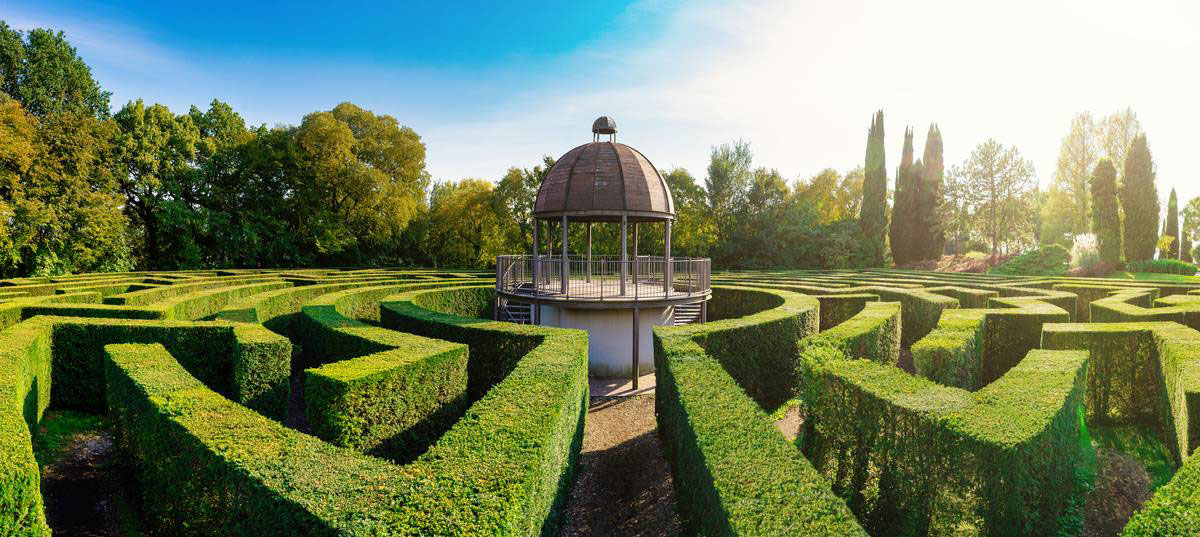The sea and the Alps. Among them, a floral heritage of six hundred thousand species. A quantitative and qualitative excellence of biodiversity, the one that cloaks the villages and cities of Italy, due to numerous variables: the nature of the soil, for example, or the winds and rainfall, or even “the connection” to the continent and a rather calm sea like the Mediterranean. And where nature arrives, man precipitates, in this case safeguarding it and “emphasizing” it in gardens and botanical gardens that represent opportunities for discovery in the open air and at a slow pace, often also in illustrious settings with a historical and artistic past of great value.
This is the case of the “Italian Gardens”, born in the Peninsula around the 16th century – based on geometric shapes and perfect symmetry -, the perfect evolution of the Renaissance garden that became the concept of “beauty” as an autonomous category and no longer as an ornament to form. It is with Donato Bramante – one of the greatest exponents of the Renaissance – that the garden takes on an autonomous dimension and becomes a frame in which friends are received and guests are surprised by the abundance of details.
Nowadays the Belpaese is full of green sceneries and precious to visit, to walk on green carpets unrolled in the sun from history and intoxicated with fragrances in a triumph of flowers, plants, perfumes and colours. Each Italian region boasts its own masterpieces, from the gardens of the Borromean Islands and Villa Taranto on Lake Maggiore to those of the Savoy Residences (Piedmont), from the Garden of Villa Durazzo Pallavicini in Genoa to the Hanbury Botanical Gardens in Ventimiglia (Liguria), among the most famous in Italy.

Botanical Garden – photos by ValerioMei/shutterstock
Lake Garda is the setting of the superb garden that surrounds the Vittoriale degli Italiani – the home of Gabriele d’Annunzio -, Lombardia is dotted with villas with historic gardens and Tuscany and the Veneto, rich in villages and historic homes, are equally “flowery”. Some examples? Villa Carlotta and Villa Varenna (the first in the province of Como, the second in the district of Lecco, both in Lombardia), Parco Giardino Sigurtà – fifty hectares of land, one of the largest landscape complexes in Italy – and the sixteenth-century Giusti Garden in Verona (Veneto), while in Tuscany all you need to know is the garden surrounding Villa Medicea di Castello, seat of the Accademia della Crusca!

Villa Carlotta – photo by AerialVision_it/shutterstock

Villa Medicea di Castello – photo by Takashi Images/shutterstock
In Latium, the Giardini di Ninfa (Latina) and Villa Lante in Bagnaia (in the province of Viterbo) stand out, one of the most ingenious “green” creations of the Italian 16th century, created by Jacopo Barozzi da Vignola, known as the Vignola, one of the greatest exponents of Italian Mannerism. In Campania Villa San Michele – on the island of Capri – amazes with the blooms that alternate throughout the year, while in Sicilia the Botanical Garden of Palermo and the Kolymbethra Garden, in the Valley of the Temples (Agrigento), the triumph of the Italian Mediterranean, are spectacular. Finally, a curiosity: every year from April to May and in Florence it is possible to visit the Iris Garden – entirely dedicated to this flower – in its flowering splendour. The garden, inaugurated in 1954 in order to host the “National Iris Competition”, hosts about three thousand varieties and is open all year round. This flower is also the emblem of Florence: the city’s coat of arms, in fact, represents the Florentine iris.

Villa Lante a Bagnaia – photo by ValerioMei/shutterstock

Orto Botanico di Palermo – photo by nikolpetr shutterstock
Main picture: Parco Giardino Sigurtà – Foto di pio3/shutterstock



0 Comment